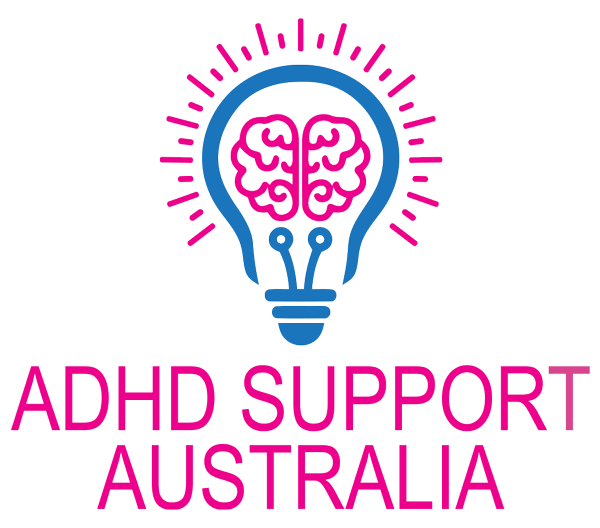
She can’t have ADHD
“When I was a kid I was pretty good at day-dreaming. In primary school I would stare into space as soon as the teacher started talking.
One day, after lunch, we lined up on the verandah of the classroom awaiting permission to walk in; I was at the end of the line. I remember snapping out of my daydream and all of a sudden ‘seeing’ the convent building, which had been in my line of vision, and despite my eyes being open, I hadn’t been ‘looking’ at it. It was then I noticed the quiet around me. The class had gone in, leaving me by myself, on the verandah “away with the pixies”. I remember the humiliation and distress of having to walk in to that classroom and being laughed at — even by the teacher — whom I had admired and loved. I have no idea how long I’d been out there.”
Educators, schools and parent advocacy groups have made such progress in the acknowledgment, support and diagnosis of kids who need educational support in the school setting. Public education has, with limited resources, attempted to provide children, parents and teachers with as much support as can be financially summoned in the eyes of public opinion. However, at the chalk-face, teachers frequently feel isolated and utterly responsible for the educational futures of children looking up into their eyes each day. Embattled by the systemic frustrations, judgmental parents and sensationalist media, these heroes continue. Often heartbroken, financially contributing to ‘their’ children and burnt out for caring so deeply and personally for the charges in their care and yet there is more that we will ask of them.
Coming to light, there is a group of children slipping underneath our educational radar. A group of girls who are polite, hard-working, perhaps chatter a bit. The whimsical, daydreaming creatives may be not just struggling to ‘focus’ but may also be fighting an exhausting neurological battle just to remember where they left their school sports uniform. A battle in which they don’t express their frustrations outwardly through behaviour or through vocalisation; instead, they internalise their shortcomings as vicious, negative self-talk, self-criticism with as much intensity as their ADHD peers. Many present with the characteristics we love about students in our class, the disorganised underdogs, the ones we have faith will get there — just not today — or perhaps even this week or this term. They are the ones receiving the encouragement awards, the ‘pats on the head’. But some among them need much more than just encouragement awards.
There are three presentations of ADHD: hyper, inattentive and a combined presentation. The hyper ones are often diagnosed before entry into school. They are physically, outwardly robust, they are the ones most obvious, who interrupt classroom dialogue and flow. Those with inattentive presentations reveal their red flags gradually as the school experiences progress unless overcome with the apparent red flag of anxiety. The children who present with ‘combined presentations’, especially girls, present with different combinations of the first two types and are not being identified until overcome, often in year six or high school; more often when their self-taught coping strategies fail under the increased expectations. Boys and girls present with ADHD at the same rate; however, boys are diagnosed three times more than their female peers, and on an average of five years later than boys. They go unnoticed, undiagnosed and unsupported with the impact later in life being significant.
There appears to be a persistent damaging myth that ADHD is a ‘behavioural problem’ and not a neurological disorder — a developmental delay in the neocortex — affecting the executive function of students. Even persisting, perhaps, is the notion that these children just need better parenting, increased structure in their lives and/or, are just lazy. While in the aisles of supermarkets whispers over the weekly specials, claims that doctors over-diagnose because parents today can’t cope. Incidentally, you cannot fake a diagnosis. At times, the simple proactive approaches some intuitive teachers employ for these children result in the presentation being hardly noticeable in the everyday learning activities of the classroom. Thus, unfortunately, reinforcing the notion that it is a behaviour issue and not how the child’s brain is wired.
As a teacher in the ’90s I was against the medication of (then ADD) children, fearful that the medication was not worth the risk. I was hopeful I could get through to this child and I feared my input would directly result in medication (of a child) as it appeared as the only pathway in those times. That simply isn’t true now. Paediatricians and psychologists may develop a range of options and strategies as well as a team to support a child with an ADHD diagnosis.
Support for diagnosed ADHD children is provided in school by the school staff and leadership. Outside funding support is not available unless there is a double diagnosis, perhaps coupled with anxiety or a learning disorder. The support for ADHD is not — and possibly could not be — provided by this current system already overloaded by the body of students it already supports. IEPs are only written for those with recognised and funded disabilities unless the school’s learning support team is terrific. The futility of applying for and/or even exploring a diagnosis is coupled with additional pressures of parent reaction and professional self-consciousness.
Teachers are not trained to identify ADHD or to express concerns to parents. Despite a teachers’ degree/s, there seems to be no education concerning what could be considered a third of a teachers’ vocation: relationships, specifically relationships with parents, the community and colleagues. Teachers are not explicitly taught how to navigate parent-teacher interviews. Nor, are they are not taught how to initiate difficult conversations. Interviews are fine when there is good news to report but when the teacher brings up something the parents disagree with or vice versa teachers avoid the unknown and avoid these conversations. These communication skills are learned through trial and error unless there is outstandingly perceptive leadership in the school. Teachers don’t want to get it wrong; they are labelled unprofessional often by the sensationalism of the media. They don’t want to be seen as whistleblowers, or building mountains out of molehills. Combine this with the lack of support they may eventually garnish; it is no wonder that colleagues are not identifying these children.
Earlier intervention will result in very real improvements for these girls and their families. The identification of girls with combined type may not present as a challenge in the classroom; however, our hunches and intuition will make a genuine and significant difference for the mental health outcomes of these girls.
Reasonable adjustments to the classroom can make a profound difference to these individuals with many positive impacts for all the students in the class. I am often reminded that fairness is not all about getting the same as everyone else; it is about getting what you need to participate and access the curriculum to access learning. A one size fits all paradigm of education is no longer appropriate.
The lives of those chatty kids, the daydreamers, the creatives or indecisive ones bring us sanity in the chaotic pressure of the classroom and may be the ones we need to help the most. Learn about ADHD and all its presentations, investigate classroom adjustments and be the teachers these children need us to be, so they can be the children we need them to be.
The author, Simon Da Roza from Exceptional Learners, provides dynamic learning support and bespoke tutoring for special needs children, children with learning difficulties and behavioural challenges.
Find out more about Simon and Exceptional Learners here
